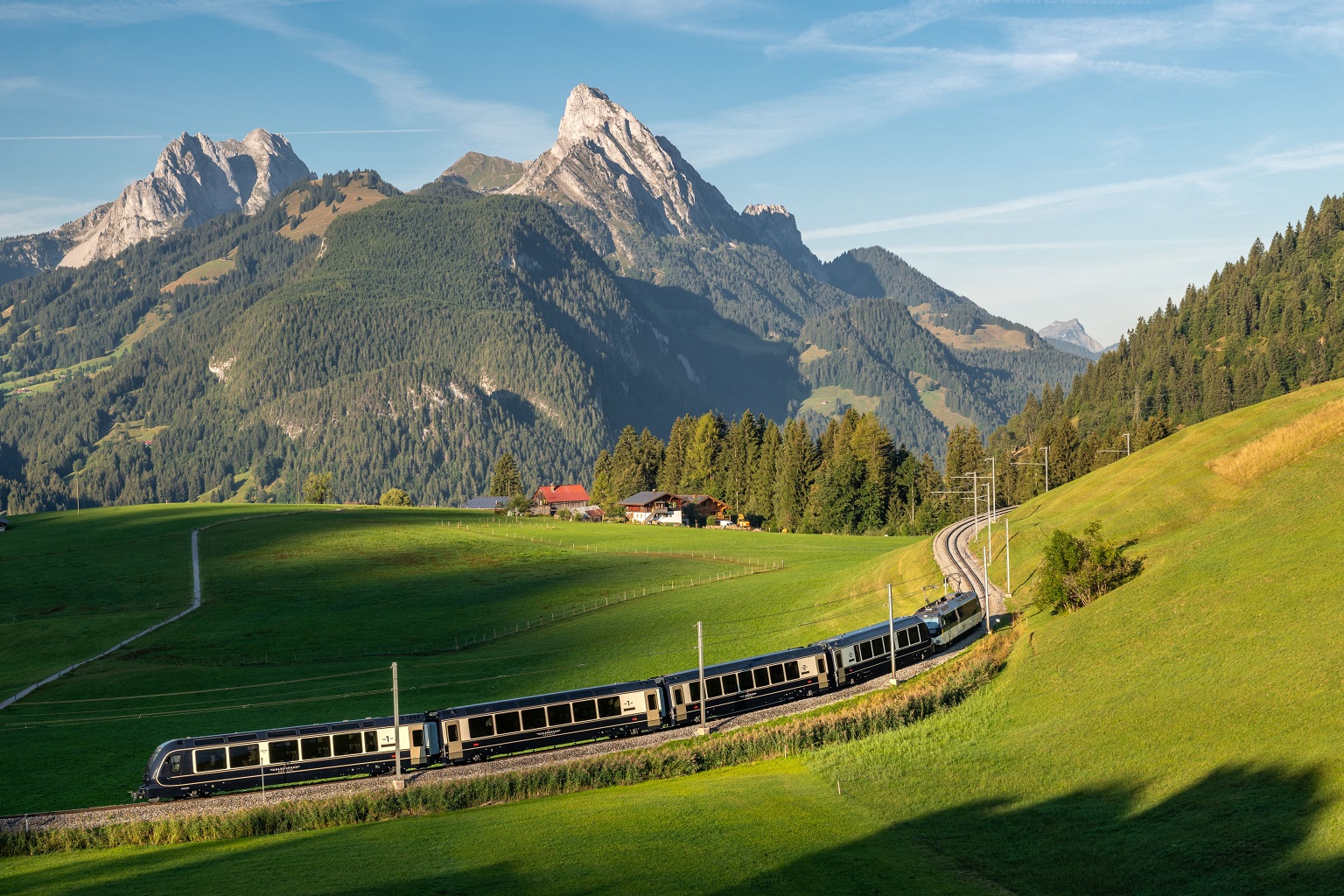
By Staff Middle Land
By Erin Levi
As I sink into the plush, cream-coloured leather recliner, a glass of Champagne in hand and hiking boots raised, I’m ready for a three-hour spectacle where nature takes centre stage. But the stage isn’t just in front of me – it’s all around.
I’m not in a theatre; I’m in Switzerland aboard the GoldenPass Express: a state-of-the-art panoramic train where floor-to-ceiling windows reveal stunning views of the Swiss countryside – from turquoise lakes that mirror towering mountain peaks to rolling meadows dotted with storybook chalets – that rival the grandest cinematic experiences. Sitting in the nine-seat Prestige Class carriage in a specially designed heated, swivelling chair feels both private and personal – as if I’ve got the snowcapped Alps, wildflower-laced pastures and bell-adorned cows to myself.
Opened in December 2022 and fully relaunched in June 2023 after addressing problems with track wear, The GoldenPass Express (GPX) is one of Europe’s newest (and most luxurious) high-tech trains. Its 115km journey follows a medieval trade route connecting Interlaken’s glaciers to Montreux’s terraced vineyards, and thanks to a technological innovation, the GPX allows travellers to take one of the world’s most scenic train routes without transferring, as passengers did previously.
The GPX is one of five premium panoramic trains within the Swiss Travel System. Individual tickets range from 56-145 Swiss francs (roughly £50-130). It’s also included in the Swiss Travel Pass (starting from 244 Swiss francs – roughly £219 – and children under 16 ride free of charge) which offers unlimited access to all public transportation (trains, trams, buses and passenger ferries), 50% off mountain railways and gondolas, and free admission to more than 500 museums.
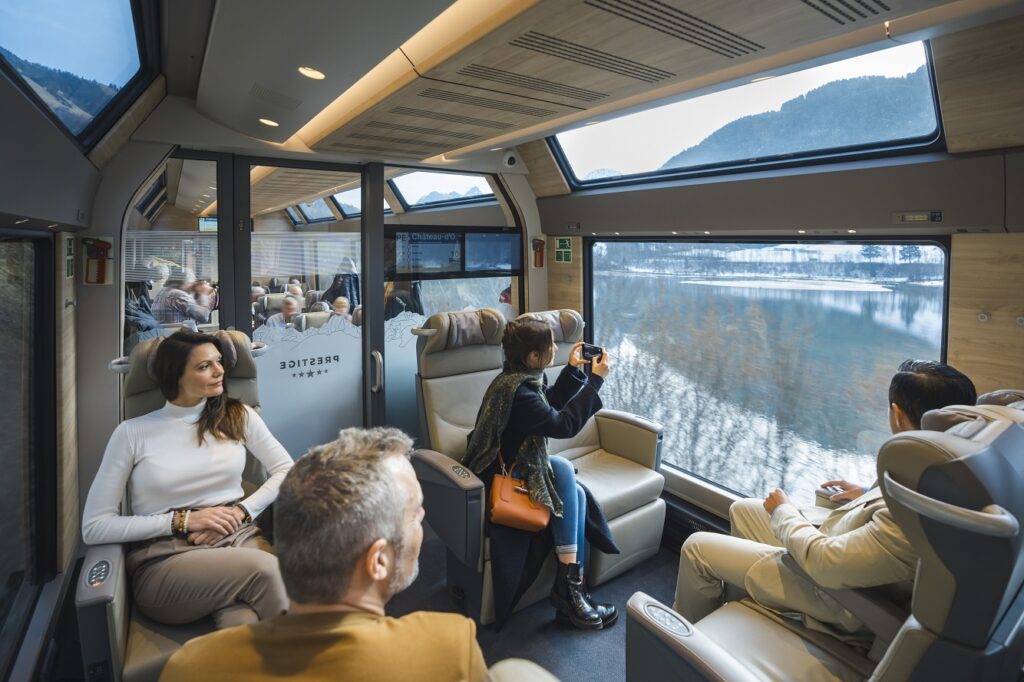
The train’s midnight-blue exterior and classic design evoke the bygone era of the original Orient Express that still connects Paris to Istanbul. Inside, the interior is crisp and cutting-edge, the Prestige Class specially designed chairs are by Ferrari-designer firm Pininfarina and are the only such rail seats in Europe. Need lower back support? There’s a button for that. Tired feet? Elevate your legs. Feeling chilly? Just press the seat warmer. Want a different view? Simply pivot your seat to face the direction of your choice. Just don’t fall asleep!
But what truly sets the GPX apart from other luxury trains is something you can’t see: it can seamlessly jump between tracks of different gauges and voltages.
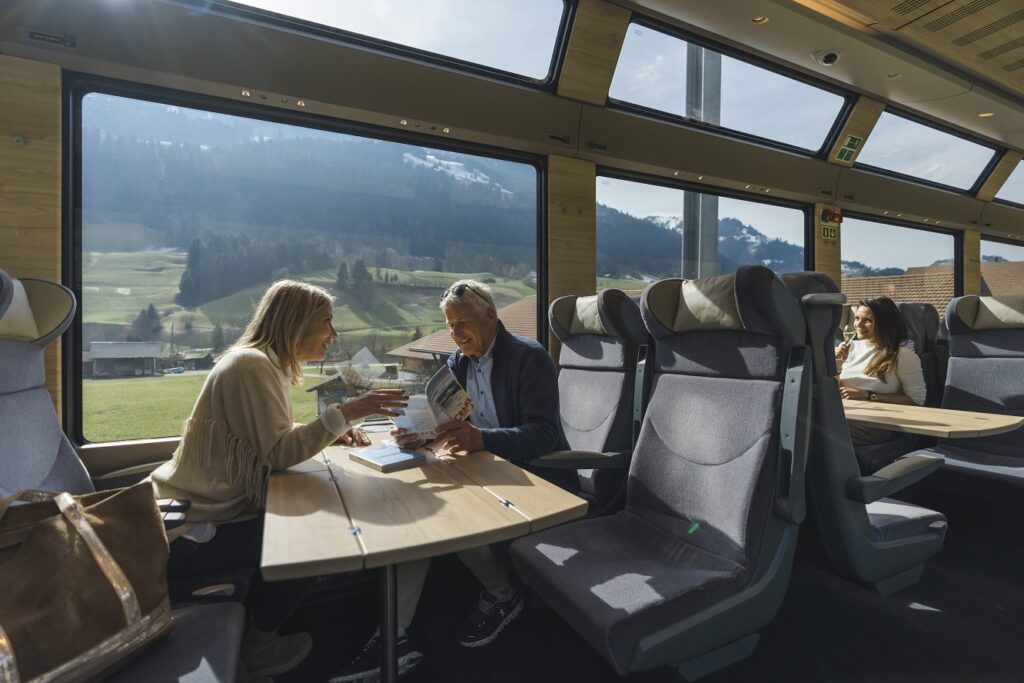
Built by Montreux-Oberland-Bernois Railway (MOB) in collaboration with BLS AG (BLS) in Bern, the train winds its way down from the heights of the Bernese Alps, passing the luxurious town of Gstaad, beloved by A-listers for its exclusivity and isolation, and Château d’Oex, famous for its hot air balloon festival (25 January-2 February 2025), before snaking through vineyards as it makes its dramatic descent towards the Vaudois Riviera. Finally, it reaches sun-soaked Montreux, where palms sway on the glistening shores of Lake Geneva.
In 1905, when MOB set out to build the GoldenPass line, the aim was to connect Francophone Montreux to German-speaking Interlaken – two big touristic and economic hubs – with a single trainline. But somewhere along the way, MOB noticed the rail wasn’t the same width; the gauges varied. It took 120 years to find a system bridging the gap.
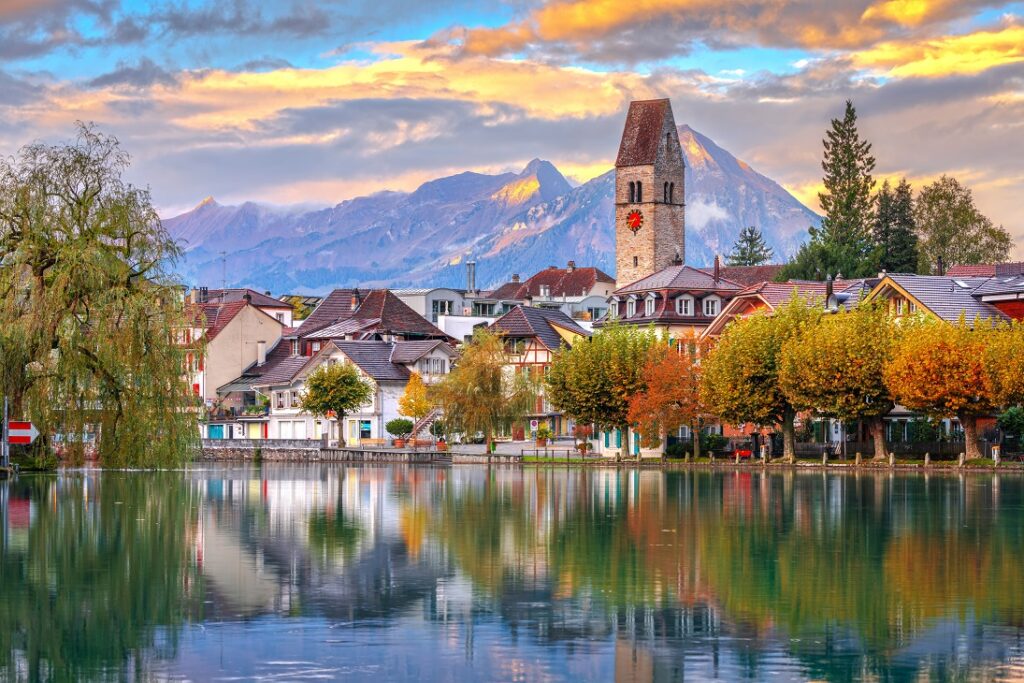
The world’s railroads use a patchwork of varying gauges – mainly broad, standard and narrow. Railway development lacked industry standards in the 19th Century, leading to varied gauges to suit terrain, transport purpose and political influences. This is one of the main reasons why we often need to change trains when we’re travelling.
As Trains magazine senior editor David Lassen tells the BBC, “countries slow to settle on a single gauge paid the price with operating challenges”. Case in point: Switzerland.
The idea of directly connecting Lake Geneva to Lakes Thun and Brienz in Interlaken dates to the late 1800s. Since 1916, the Lucerne-Interlaken-Zweisimmen-Montreux route, known as the GoldenPass line, allowed travel between these destinations, but required two train changes because of the tracks’ differing gauges. In 1928, the concept of adding a third rail was discussed.
“That would have required building tunnels,” said MOB product manager Fanny Moix. She explained that this was “technically impossible” because of a combination of bureaucracy and the complexity of building dual-gauge tracks through a busy, complicated junction.
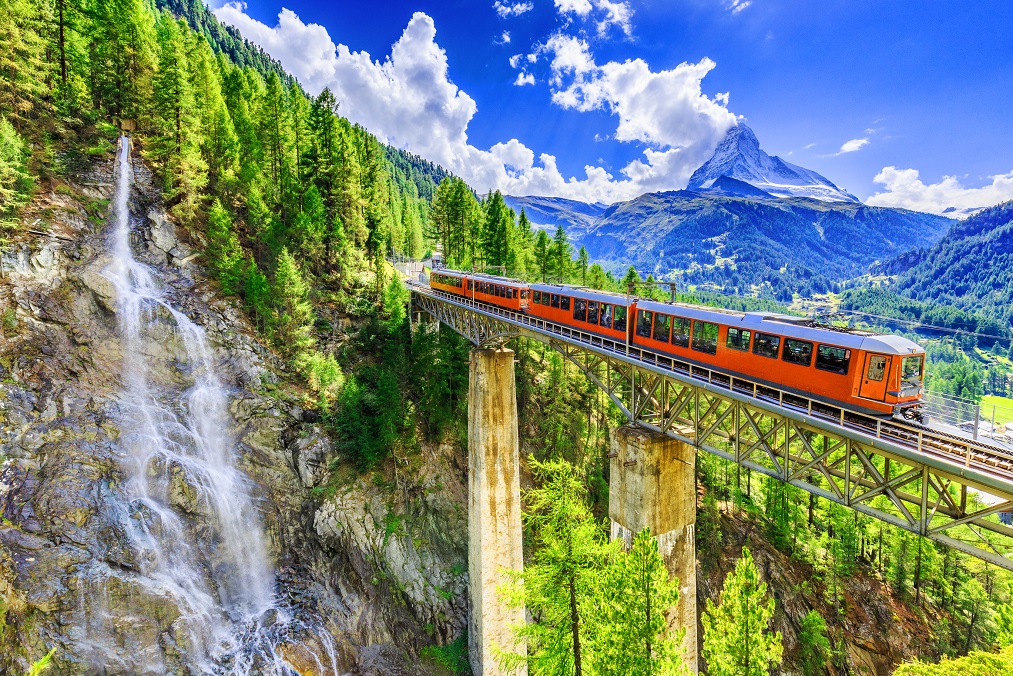
Still, as Interlaken Tourism markets manager Celina Finger maintains: “Changing trains is a huge hassle for tourists.” It’s also a reason why the GoldenPass line hasn’t been as popular as its panoramic counterparts, like the Glacier Express.
Now, instead of requiring travellers to change trains in the middle of the journey, the GPX can make the three-hour-15-minute journey directly, thanks to the revolutionary “variable gauge bogie”. The technology, developed in 2022 after 15 years of research and costing 89m Swiss francs (£80m), was publicly funded by the cantons of Vaud, Bern, Freiburg and the Swiss Confederation. This innovation facilitates seamless transitions between narrow and standard gauges and voltage changes within seconds, effectively enabling a train to jump tracks while moving. It’s a groundbreaking new standard in rail travel – not just in Switzerland, but globally.
“[The GPX] is a link to our past and our future,” said Frédéric Delachaux, MOB marketing director, explaining that it realises the centuries-old dream of linking Switzerland to Europe by rail via the Alps.
As I made the historic journey for the first time, approaching Zweisimmen station, I hesitated to leave the comforts of my warm seat where I was nibbling on local cheeses (there is no full-service dining on board but there are local snack options). I stretched my legs and peered out the window as we briefly paused for the locomotive change, which allows the train to adapt to the electrical voltage change. A few minutes later, we were travelling towards Schönried, a ski resort town neighbouring Gstaad, and as the train carried on, I barely felt a thing.
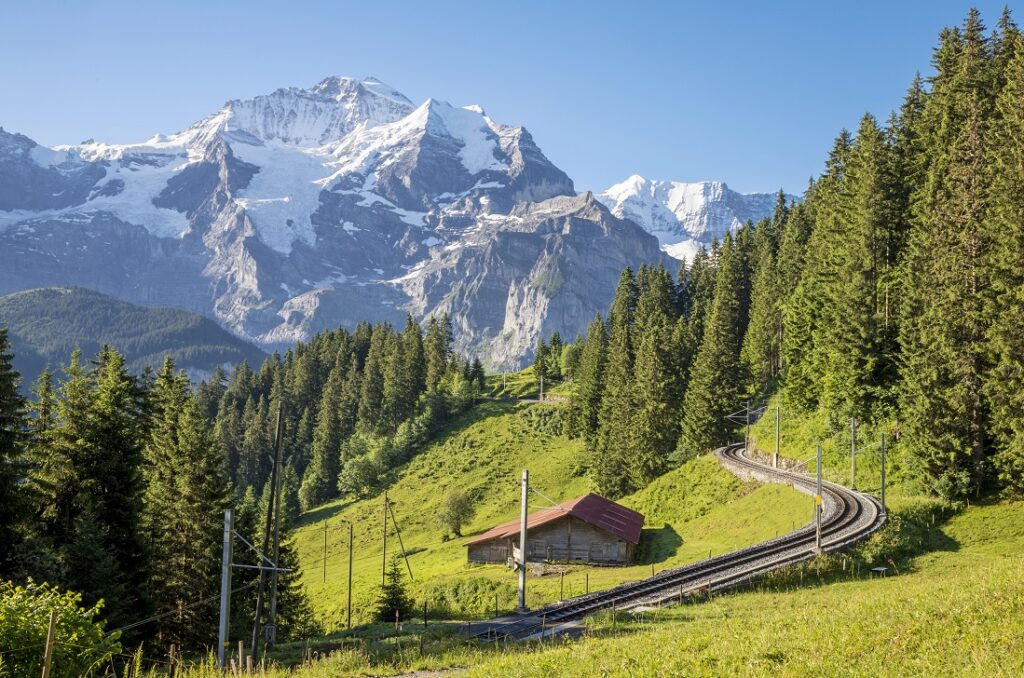
Meanwhile, as the train’s elevation shifted ever so slightly (rising about 200 mm) to accommodate the gauge attrition and platform height, an engineering marvel was happening right below my feet – even if only a discerning train aficionado would notice it.
“It’s a big frustration for us in marketing because you don’t feel anything!” lamented Delachaux. Perhaps the engineers did too good a job. Because of this, the gauge change is displayed on a screen to passengers as it’s happening.
While there are other trains in France and Japan that can move a few centimetres, “this is the only train in the world that moves 43cm”, said Delachaux.
It’s perhaps no surprise that the Swiss were able to pull off this engineering feat. Living in a landlocked nation that’s 70% mountainous and filled with some 1,500 lakes, people here have long had to negotiate the obstacles posed by their challenging terrain – and along the way, exemplified a certain determination and ingenuity that is decidedly Swiss..
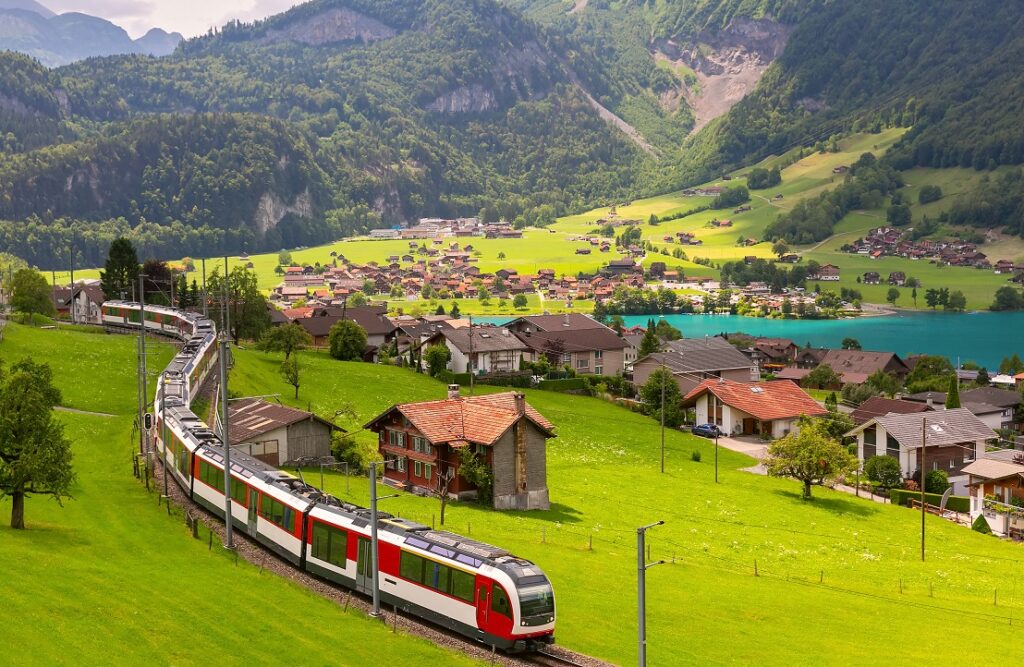
As Clarence Rook wrote in his 1907 book Switzerland and Its People: “There are bigger mountains in the world than may be found in Switzerland. But you will nowhere find in so small a space so many triumphs of engineering. The Swiss roads and railways stand as a monument to the victory of human skill over physical obstacles.”
And so, I wondered, are there plans to connect the entire GoldenPass line from its origin at Lucerne to Montreux?
“That’s the new dream,” said Moix, laughing. “It’s also a technical issue because between Lucerne and Interlaken we have a cog railway. That means we’d need to add a cog system to the GoldenPass Express, and that takes a lot of time – another lifetime.”
Original article: BBC



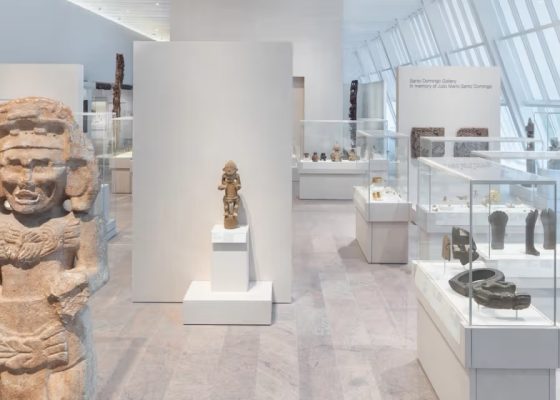



Cancel anytime


Using our website
You may use the The Middle Land website subject to the Terms and Conditions set out on this page. Visit this page regularly to check the latest Terms and Conditions. Access and use of this site constitutes your acceptance of the Terms and Conditions in-force at the time of use.
Intellectual property
Names, images and logos displayed on this site that identify The Middle Land are the intellectual property of New San Cai Inc. Copying any of this material is not permitted without prior written approval from the owner of the relevant intellectual property rights.
Requests for such approval should be directed to the competition committee.
Please provide details of your intended use of the relevant material and include your contact details including name, address, telephone number, fax number and email.
Linking policy
You do not have to ask permission to link directly to pages hosted on this website. However, we do not permit our pages to be loaded directly into frames on your website. Our pages must load into the user’s entire window.
The Middle Land is not responsible for the contents or reliability of any site to which it is hyperlinked and does not necessarily endorse the views expressed within them. Linking to or from this site should not be taken as endorsement of any kind. We cannot guarantee that these links will work all the time and have no control over the availability of the linked pages.
Submissions
All information, data, text, graphics or any other materials whatsoever uploaded or transmitted by you is your sole responsibility. This means that you are entirely responsible for all content you upload, post, email or otherwise transmit to the The Middle Land website.
Virus protection
We make every effort to check and test material at all stages of production. It is always recommended to run an anti-virus program on all material downloaded from the Internet. We cannot accept any responsibility for any loss, disruption or damage to your data or computer system, which may occur while using material derived from this website.
Disclaimer
The website is provided ‘as is’, without any representation or endorsement made, and without warranty of any kind whether express or implied.
Your use of any information or materials on this website is entirely at your own risk, for which we shall not be liable. It is your responsibility to ensure any products, services or information available through this website meet your specific requirements.
We do not warrant the operation of this site will be uninterrupted or error free, that defects will be corrected, or that this site or the server that makes it available are free of viruses or represent the full functionality, accuracy and reliability of the materials. In no event will we be liable for any loss or damage including, without limitation, loss of profits, indirect or consequential loss or damage, or any loss or damages whatsoever arising from the use, or loss of data, arising out of – or in connection with – the use of this website.
Last Updated: September 11, 2024
New San Cai Inc. (hereinafter “The Middle Land,” “we,” “us,” or “our”) owns and operates www.themiddleland.com, its affiliated websites and applications (our “Sites”), and provides related products, services, newsletters, and other offerings (together with the Sites, our “Services”) to art lovers and visitors around the world.
This Privacy Policy (the “Policy”) is intended to provide you with information on how we collect, use, and share your personal data. We process personal data from visitors of our Sites, users of our Services, readers or bloggers (collectively, “you” or “your”). Personal data is any information about you. This Policy also describes your choices regarding use, access, and correction of your personal information.
If after reading this Policy you have additional questions or would like further information, please email at middleland@protonmail.com.
PERSONAL DATA WE COLLECT AND HOW WE USE IT
We collect and process personal data only for lawful reasons, such as our legitimate business interests, your consent, or to fulfill our legal or contractual obligations.
Information You Provide to Us
Most of the information Join Talents collects is provided by you voluntarily while using our Services. We do not request highly sensitive data, such as health or medical information, racial or ethnic origin, political opinions, religious or philosophical beliefs, trade union membership, etc. and we ask that you refrain from sending us any such information.
Here are the types of personal data that you voluntarily provide to us:
As a registered users or customers, you may ask us to review or retrieve emails sent to your business. We will access these emails to provide these services for you.
We use the personal data you provide to us for the following business purposes:
Information Obtained from Third-Party Sources
We collect and publish biographical and other information about users, which we use to promote the articles and our bloggers who use our sites. If you provide personal information about others, or if others give us your information, we will only use that information for the specific reason for which it was provided.
Information We Collect by Automated Means
Log Files
The site uses your IP address to help diagnose server problems, and to administer our website. We use your IP addresses to analyze trends and gather broad demographic information for aggregate use.
Every time you access our Site, some data is temporarily stored and processed in a log file, such as your IP addresses, the browser types, the operating systems, the recalled page, or the date and time of the recall. This data is only evaluated for statistical purposes, such as to help us diagnose problems with our servers, to administer our sites, or to improve our Services.
Do Not Track
Your browser or device may include “Do Not Track” functionality. Our information collection and disclosure practices, and the choices that we provide to customers, will continue to operate as described in this Privacy Policy, whether or not a “Do Not Track” signal is received.
HOW WE SHARE YOUR INFORMATION
We may share your personal data with third parties only in the ways that are described in this Privacy Policy. We do not sell, rent, or lease your personal data to third parties, and We does not transfer your personal data to third parties for their direct marketing purposes.
We may share your personal data with third parties as follows:
There may be other instances where we share your personal data with third parties based on your consent.
HOW WE STORE AND SECURE YOUR INFORMATION
We retain your information for as long as your account is active or as needed to provide you Services. If you wish to cancel your account, please contact us middleland@protonmail.com. We will retain and use your personal data as necessary to comply with legal obligations, resolve disputes, and enforce our agreements.
All you and our data are stored in the server in the United States, we do not sales or transfer your personal data to the third party. All information you provide is stored on a secure server, and we generally accepted industry standards to protect the personal data we process both during transmission and once received.
YOUR RIGHTS/OPT OUT
You may correct, update, amend, delete/remove, or deactivate your account and personal data by making the change on your Blog on www.themiddleland.com or by emailing middleland@protonmail.com. We will respond to your request within a reasonable timeframe.
You may choose to stop receiving Join Talents newsletters or marketing emails at any time by following the unsubscribe instructions included in those communications, or you can email us at middleland@protonmail.com
LINKS TO OTHER WEBSITES
The Middle Land include links to other websites whose privacy practices may differ from that of ours. If you submit personal data to any of those sites, your information is governed by their privacy statements. We encourage you to carefully read the Privacy Policy of any website you visit.
NOTE TO PARENTS OR GUARDIANS
Our Services are not intended for use by children, and we do not knowingly or intentionally solicit data from or market to children under the age of 18. We reserve the right to delete the child’s information and the child’s registration on the Sites.
PRIVACY POLICY CHANGES
We may update this Privacy Policy to reflect changes to our personal data processing practices. If any material changes are made, we will notify you on the Sites prior to the change becoming effective. You are encouraged to periodically review this Policy.
HOW TO CONTACT US
If you have any questions about our Privacy Policy, please email middleland@protonmail.com
The Michelin brothers created the guide, which included information like maps, car mechanics listings, hotels and petrol stations across France to spur demand.
The guide began to award stars to fine dining restaurants in 1926.
At first, they offered just one star, the concept was expanded in 1931 to include one, two and three stars. One star establishments represent a “very good restaurant in its category”. Two honour “excellent cooking, worth a detour” and three reward “exceptional cuisine, worth a
Thank you for your participation,
please Log in or Sign up to Vote

123Sign in to your account